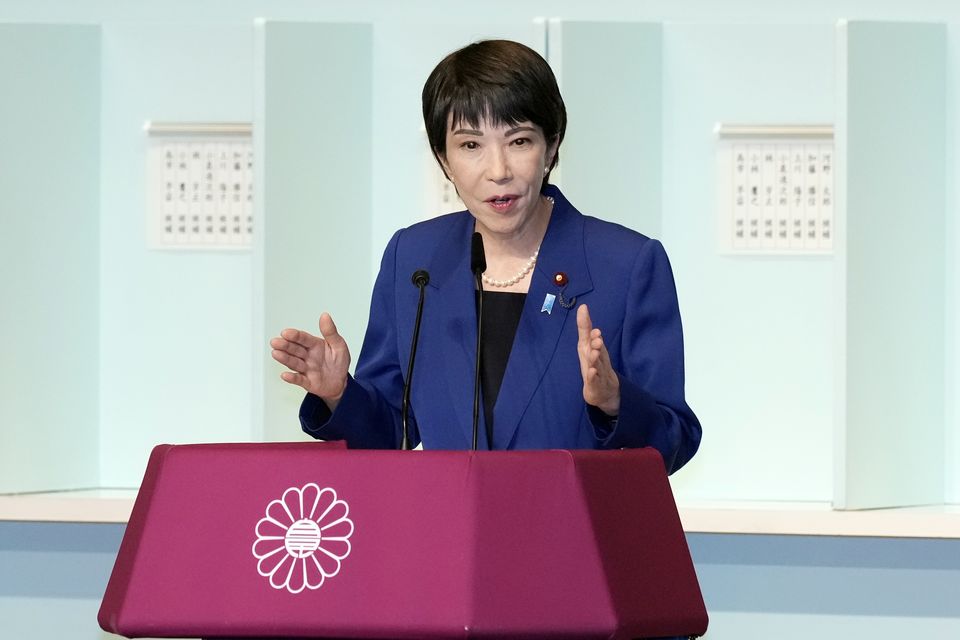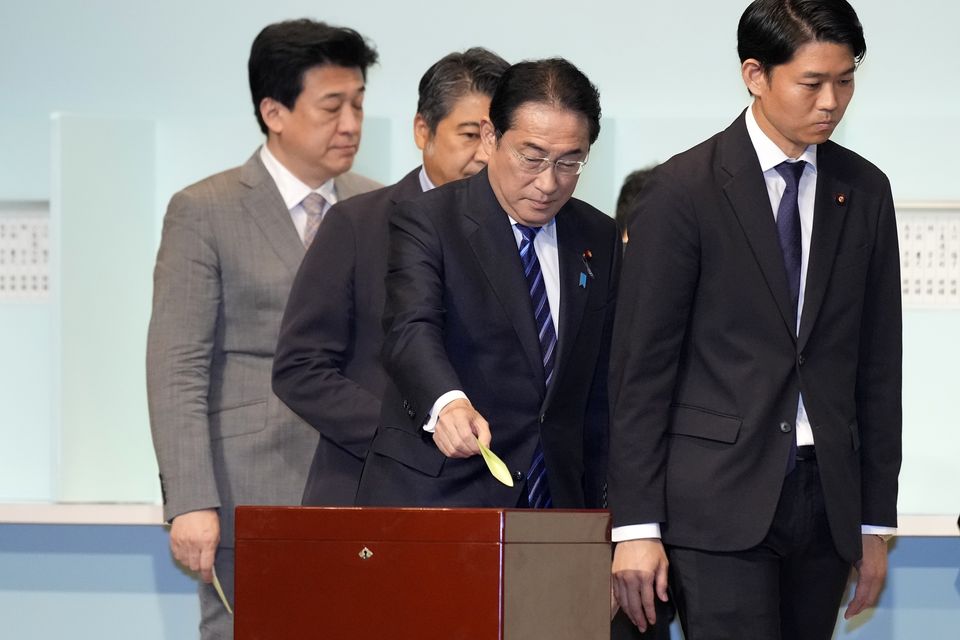Japan’s ruling party has picked former defence minister Shigeru Ishiba as leader, setting him up to become prime minister next week.
The party leadership win is a ticket to the top job because the Liberal Democratic Party’s (LDP) ruling coalition currently controls the parliament.
Considered a defence policy expert, Mr Ishiba has proposed an Asian version of the Nato military alliance and a more equal Japan-US security alliance.
Sanae Takaichi was running to become the country’s first female prime minister (Hiro Komae, Pool/AP)
Mr Ishiba is a supporter of Taiwan’ s democracy.
He calls for an establishment of a disaster management agency in one of the world’s most disaster-prone countries.
Mr Ishiba beat economic security minister Sanae Takaichi, a staunch conservative who was running to become the country’s first female prime minister.
A record nine legislators, including two women, ran in a vote decided by LDP members of parliament and about one million dues-paying party members.
That is only 1% of the country’s eligible voters.
Outgoing prime minister Fumio Kishida has been dogged by party corruption scandals, and the LDP wanted a fresh leader in the hopes of regaining public trust before a likely general election.
Some experts believe that party turmoil could mean that Japan will return to an era similar to the early 2000s, which saw “revolving door” leadership changes and political instability.
A succession of short-lived governments hurts Japanese prime ministers’ ability to set up long-term policy goals or develop trusted relations with other leaders.
Japan’s Prime Minister Fumio Kishida, centre, casts his ballot at the Liberal Democratic Party’s leadership election in Tokyo (Hiro Komae, Pool/AP)
On Tuesday, Mr Kishida and his cabinet ministers will resign.
Mr Ishiba, after being formally elected in a parliamentary vote, will then form a new cabinet later in the day.
The main opposition – the liberal-leaning Constitutional Democratic Party of Japan – has struggled to build momentum, despite the LDP scandals.
But experts say its newly elected leader, centrist former prime minister Yoshihiko Noda, is pushing a conservative shift for the party and could trigger broader political regroupings.

